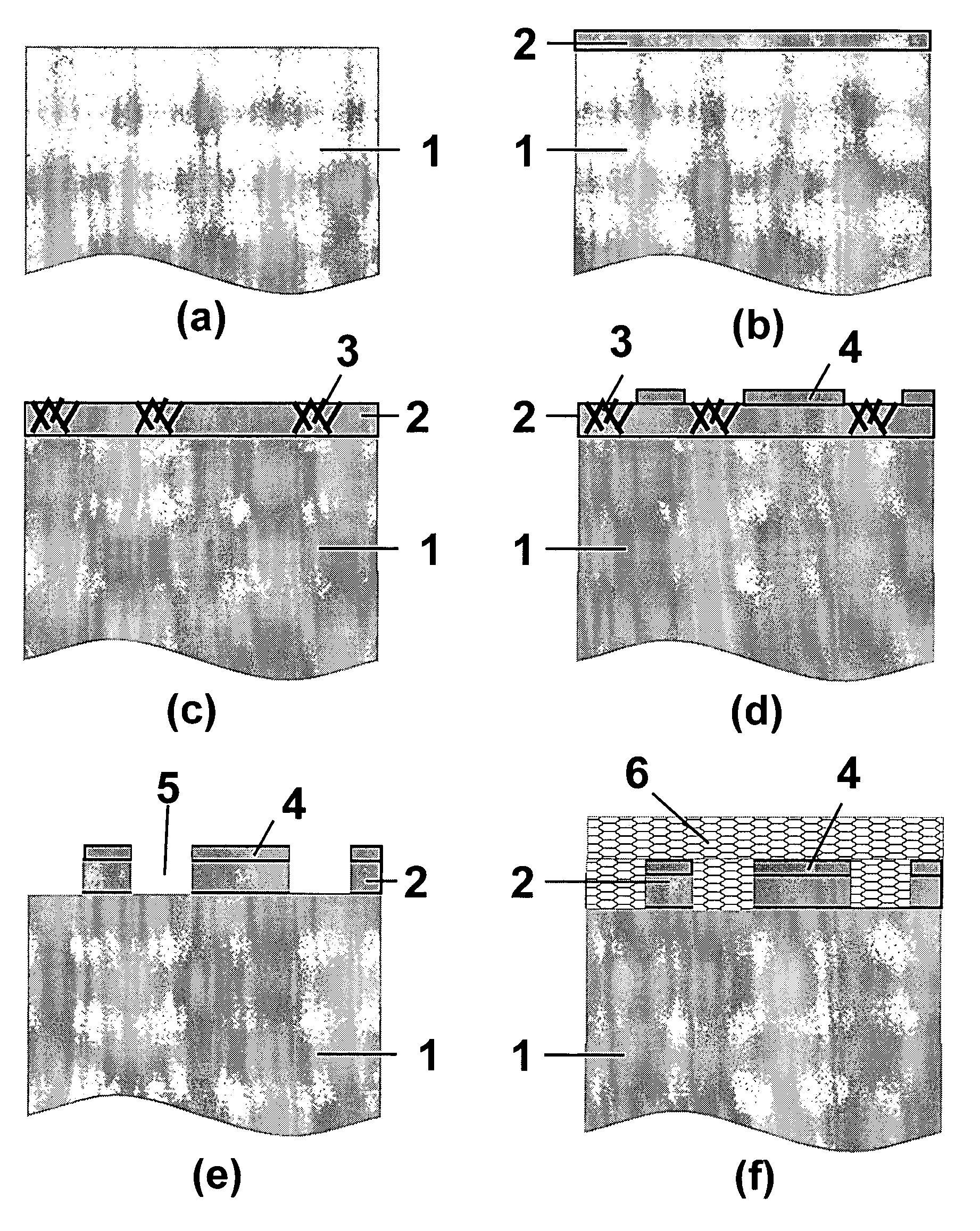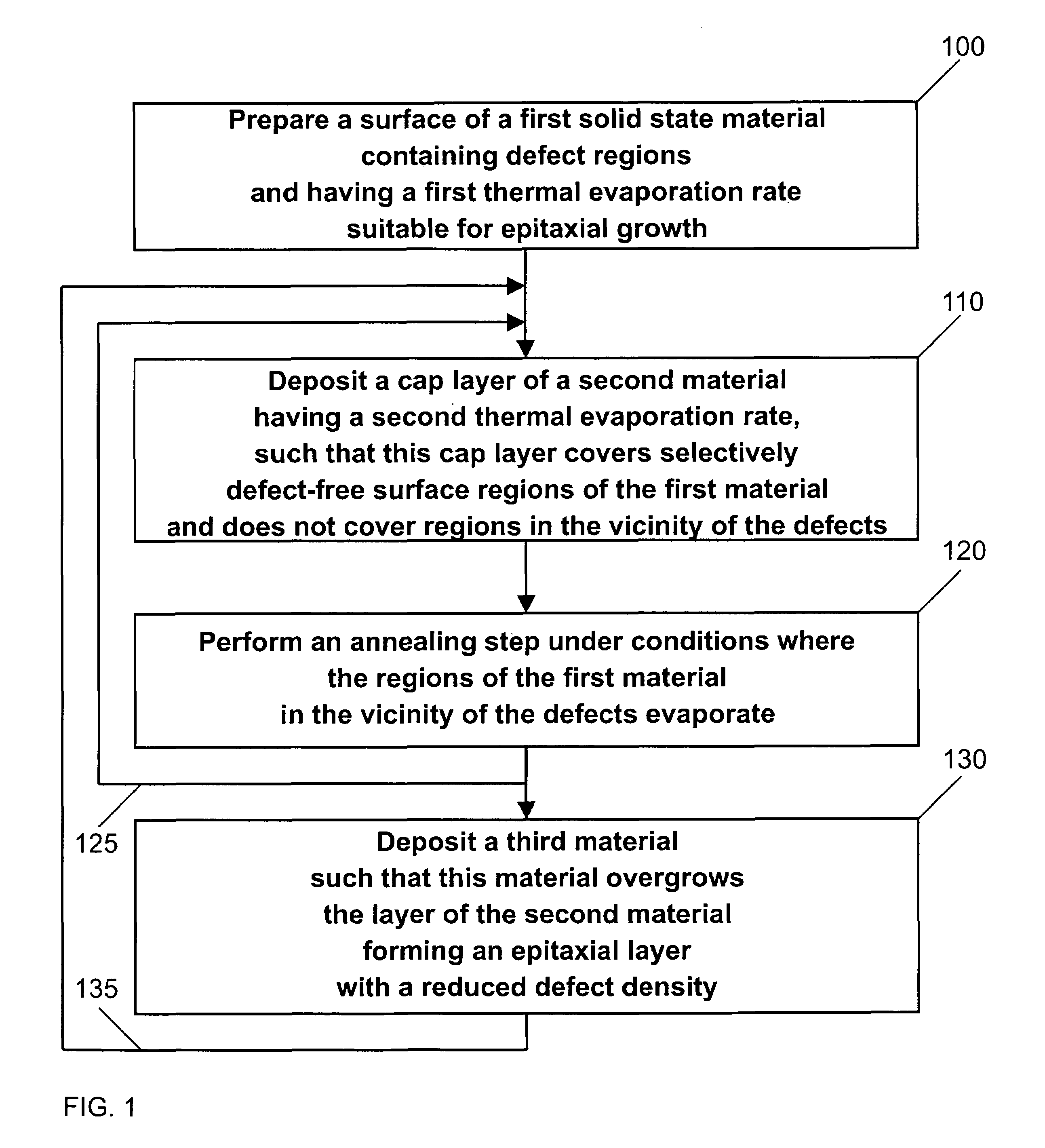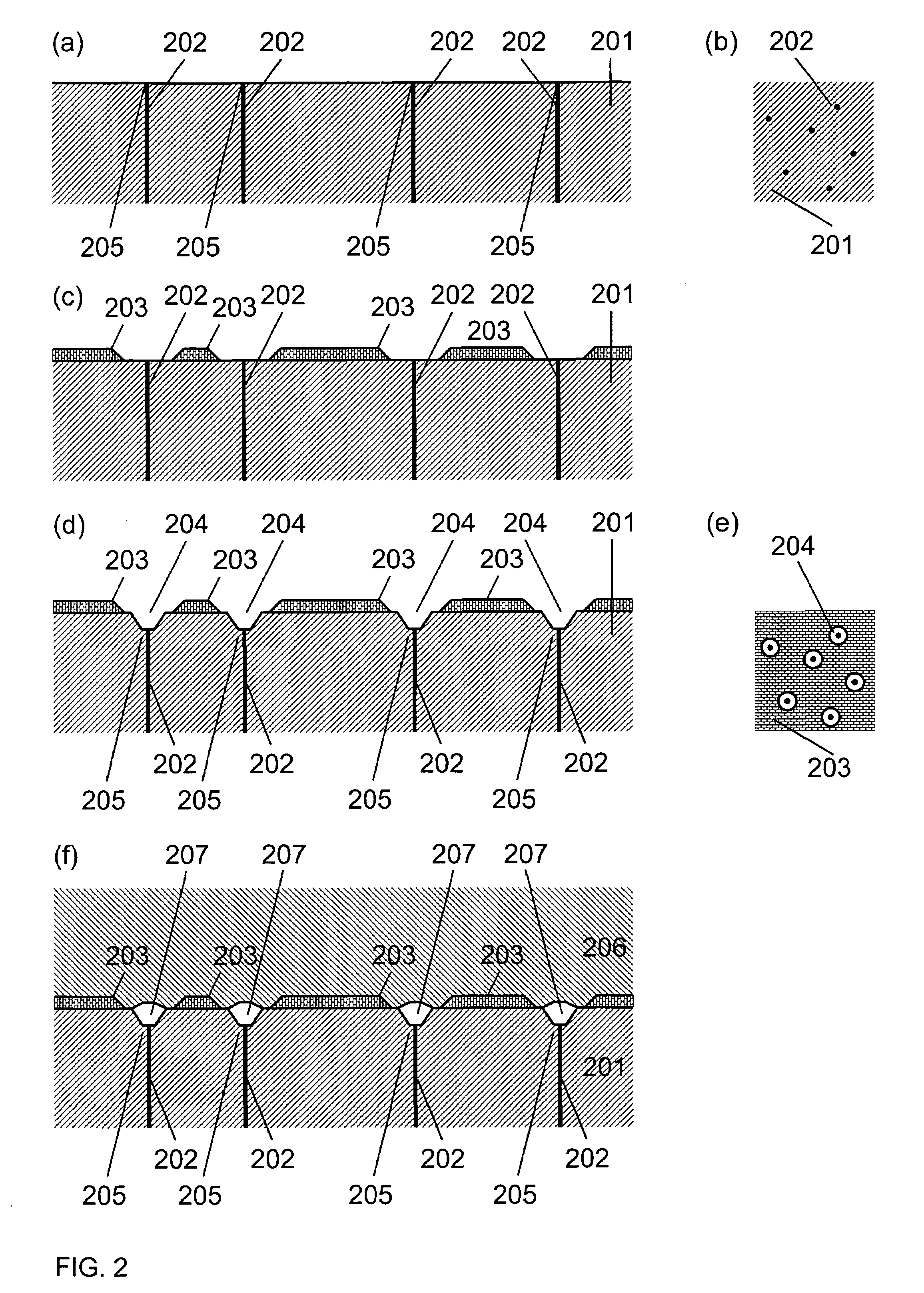Defect-free semiconductor templates for epitaxial growth
a technology of epitaxial growth and defects, applied in the direction of crystal growth process, semiconductor laser, nanoinformatics, etc., can solve the problems of limiting or even ruining reducing their mobility, and limiting the performance of many semiconductor devices, and achieve high temperature stability
- Summary
- Abstract
- Description
- Claims
- Application Information
AI Technical Summary
Benefits of technology
Problems solved by technology
Method used
Image
Examples
Embodiment Construction
[0055]The current invention overcomes the shortcomings of the prior art with an improved method for selective etching off of defect-rich regions and application of the method to different materials systems and different semiconductor devices.
[0056]One method to eliminate defects in epitaxial layers deposits a temperature stable material, which does not cover the regions in the vicinity of the defects. After thermal treatment, the regions near the defects were evaporated. A mechanism for the selective repulsion of the cap material with respect to the defect regions is additionally disclosed. This is elastic repulsion due to different lattice constants in local plastically-relaxed regions in the vicinity of the dislocation in the epilayer and the cap layer, which has a lattice parameter in no-strain state close to that on the surface of the defect-free regions of the epilayer.
[0057]Referring to FIGS. 9 and 10, the method of in-situ fabrication of dislocation-free structures from plast...
PUM
 Login to View More
Login to View More Abstract
Description
Claims
Application Information
 Login to View More
Login to View More - R&D
- Intellectual Property
- Life Sciences
- Materials
- Tech Scout
- Unparalleled Data Quality
- Higher Quality Content
- 60% Fewer Hallucinations
Browse by: Latest US Patents, China's latest patents, Technical Efficacy Thesaurus, Application Domain, Technology Topic, Popular Technical Reports.
© 2025 PatSnap. All rights reserved.Legal|Privacy policy|Modern Slavery Act Transparency Statement|Sitemap|About US| Contact US: help@patsnap.com



